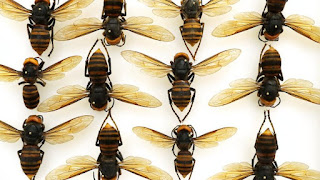The invasion of the Asian giant wasp hit the lands of Europe. Starting with just one queen, suddenly the number became more and more and soared!
Genetic analysis has revealed their rapid and widespread incursion across the western region was most likely caused by just one wasp moving from China to France in 2004.
University College Cork zoologist Eileen Dillane and her team analyzed three genes from the arrival of the first Asian bee recorded in Ireland in April 2021, and compared them to sequences of wasps found across mainland Europe. All of the genes are mitochondrial genes, which are passed along the female line.
"Previous work has shown that Asian wasps in Europe appear to share the same genetic lineage, based on single gene studies. We went a step further and looked at two additional genes that would be more sensitive in detecting variation in invasive populations," explained Dilane.
"Our results, along with those of other groups, suggest that the entire European population of V. velutina, now potentially numbering in the millions, is descended from a single mating queen who arrived from China about 15–20 years ago," the team wrote in their paper. .
In Southeast Asia, where it is native, the Asian giant wasp preys on the Asian honey bee. However, the Asian honey bee has strong defensive abilities so it is not easy to prey on it. Unfortunately, European honey bees lack this defensive behavior, making them easy targets for Asian giant wasps.
The Asian giant wasp has such an unpleasant sting that some people may have an allergic reaction. But fortunately they are not aggressive towards humans, unlike European wasps.
From the study, the team noted that the very low genetic diversity in European populations of V. velutina could provide potential for biological control. Unfortunately, the researchers also warn that climate change will likely increase the threat of a more powerful invasion in the future. Their research was published in the Journal of Hymenoptera, as quoted from Science Alert.

